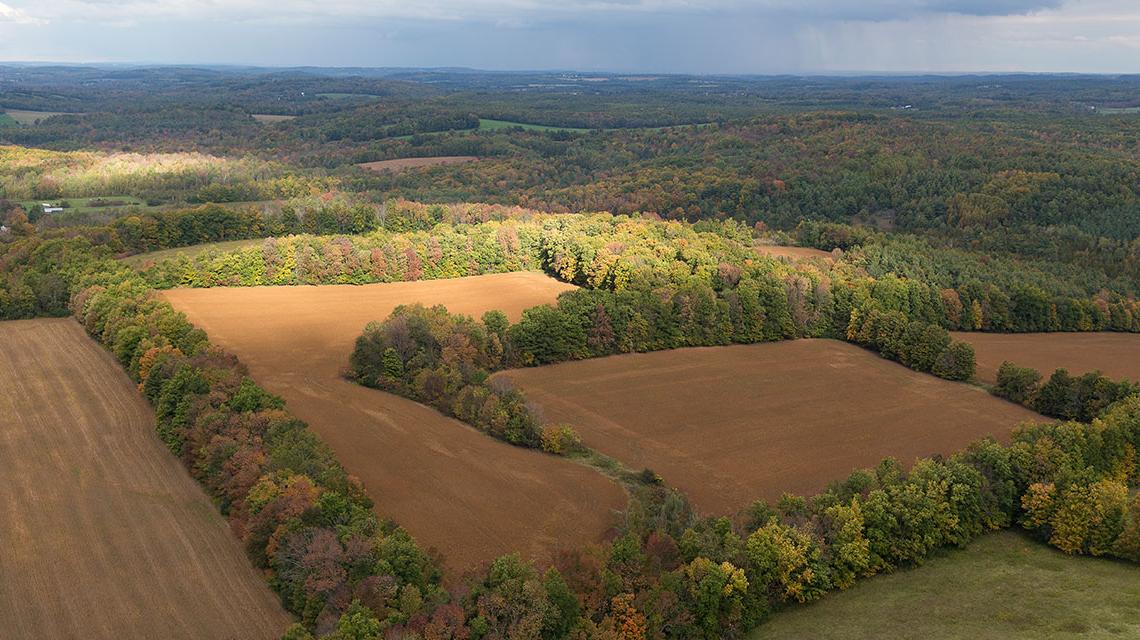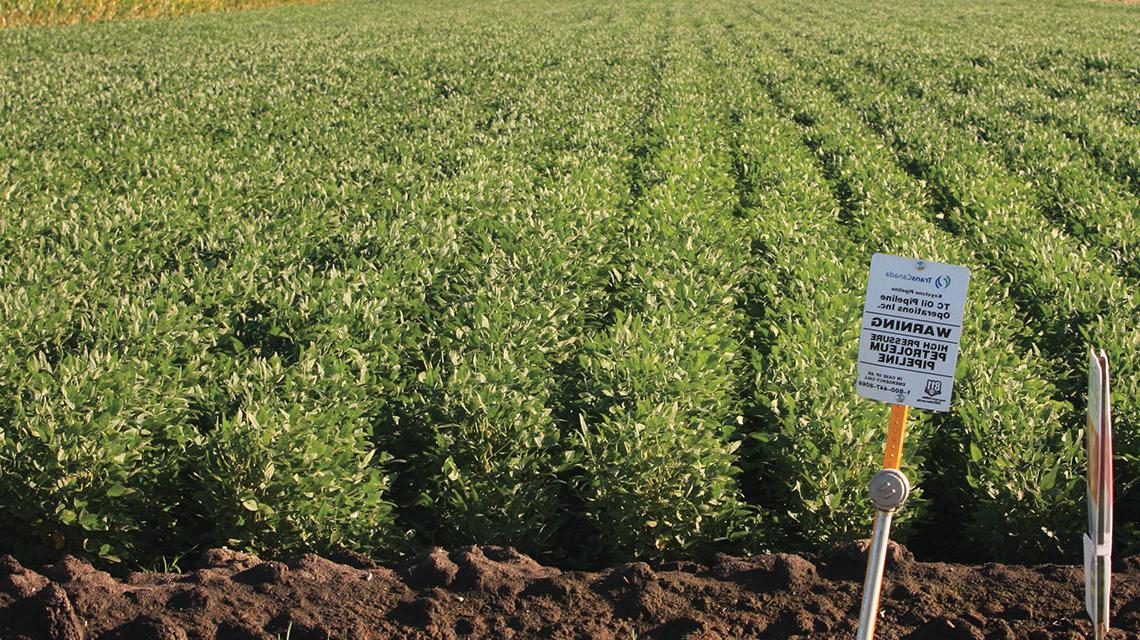Nov 13, 2024
Working with landowners
As an energy infrastructure company with operations in three countries, we’re proud of the relationships we've built with close to 100,000 landowners across our pipeline and asset network.
How we engage with landowners
Building and managing relationships with landowners across North America is critical to our success. That's why we've developed a set of principles to ensure our interactions with landowners are conducted in a positive and consistent manner.
Our guiding principles are aligned with TC Energy’s commitment statement and rooted in our core values of safety, responsibility, collaboration, innovation and integrity.

In all interactions with landowners we are committed to being:
Respectful and trustworthy
We recognize the importance and value of developing and maintaining relationships with landowners that are based on respect and trust. We seek to understand, document and resolve landowner concerns through collaborative and mutually beneficial means.
Honest
We engage landowners early and often. Engaging means listening, providing accurate information and responding to questions in a prompt and consistent manner. We use honest and transparent business practices to build strong relationships.
Fair
Our goal is to develop mutually beneficial relationships that are fair and reasonable, balancing landowner concerns and perspectives with business needs.
Accountable
We fulfill our commitments and take ownership for our actions. We carry out our business activities in compliance with our corporate policies and applicable laws and regulations.
Professional
We conduct ourselves in a professional and courteous manner, remaining open and frank and taking concerns seriously.
Responsible for protection of private information
We recognize that land records are an important asset that must be carefully managed. We use best practices with respect to records management and the protection of private information.
 Case study: Our guiding principles in action
Case study: Our guiding principles in action
As an energy infrastructure company with operations in three countries, we’re proud of the relationships we’ve built with landowners. We are guests on our landowners’ property, so they should expect to be treated in a way that lives up to our guiding principles of landowner engagement.
Put into service in 2018, the Sundre Crossover pipeline project connected natural gas supplies from Mountain View County, Alberta to the U.S. Pacific Northwest and California. The project generated more than $4 million in economic benefits to the town of Sundre and surrounding areas.
The project also established relationships with several new landowners, including Sandy Rock and her family. Hear what Sandy had to say about her experience working with TC Energy and how our people lived up to the guiding principles we use with all our landowners.
Safety
Being a good neighbour means being a safe neighbour, which is why safety considerations factor into everything we do. We strive for a zero-incident workplace and maintain a top safety record across our operations.
If you live or work near one of our pipelines or facilities, please download one of our booklets on our safety policies and procedures in the safety section of our website.
Contact
Do you live or work near a TC Energy pipeline or facility?
Before you dig or cross, visit the Click Before You Dig website.
Please contact us for any additional questions or concerns you may have, or call the landowner helpline in your country:
Canada:
1-866-372-1601
cdn_landowner_help@bjlanjia.com
United States:
1-877-287-1782
us_land@bjlanjia.com
United States – Columbia Pipeline Group (CPG):
1-304-357-3625 (Main hotline)
1-888-499-3450 (Project hotline)
Mexico:
01-800-111-3333
Resources for landowners
Additional information for landowners can be found in the following brochures.

Pipelines and facilities located near you
With 93,300 kilometres (57,900 miles) of pipelines, you can find our facilities in hundreds of communities throughout North America. View our map for more information.
Remember that if you’re planning to dig or cross, visit the Click Before You Dig website.
Frequently Asked Questions
What compensation will landowners be offered for their land rights?
All landowners will receive fair and equitable compensation for the land easements granted. For further questions about compensation, please contact your Land Representative.
How will TC Energy minimize the disturbance to my land?
TC Energy works very closely with landowners to identify special circumstances, land restrictions, access routes and other construction requirements to minimize disturbance to the land, the landowner and the environment.
What does TC Energy do to make sure my family will be safe in case of emergency?
Your safety is our top priority. Learn more about how we keep you safe through the operation of our pipelines and assets by reading about emergency preparedness.
How will TC Energy ensure my property is restored to its former state post-construction?
Working closely with you, there are various techniques our environmental experts use to return the land along the pipeline right of way (ROW) to the original condition, use and biological diversity that existed before construction.
How is a pipeline route selected?
One of the most important elements when designing a new pipeline is determining the route the pipeline will take. Where possible, TC Energy tries to minimize the route length and use existing pipeline right-of-ways or other linear disturbances that have previously established corridors, which will minimize the social and environmental effects.
If a new right of way (ROW) must be established, TC Energy works with landowners, stakeholders and Indigenous communities to ensure that valuable information is gathered and incorporated into the final route.
How do we cross the ROW with agricultural equipment?
Generally, normal agricultural equipment can cross the pipeline as long as it is being operated within manufacturer specifications. Equipment is usually reviewed at the time we receive an easement from a landowner. If you are unsure if your agricultural equipment meets the safety criteria, please contact your Land Representative.
How can I work with TC Energy before I undertake activities on my land?
The documents attached to the 'Resources and Landowners' section above are intended for individuals undertaking various activities along TC Energy’s rights of way. Our primary concern is for public safety and to help ensure the continuous safe flow of North America’s energy supplies. If you need information beyond what’s provided here, please contact your Land Representative.
How does TC Energy stay in contact with me through the operations of their pipeline?
We connect with our key community stakeholders on an on-going basis through an Integrated Public Awareness (IPA) program in both Canada and the United States. The IPA is a coordinated approach to inform the public of the location of TC Energy facilities and activities. The level of public awareness provided and the frequency of contact maintained with affected stakeholders is dependent on the specific needs and risks of each region. If you have questions about this, please contact your Land Representative.
Is TC Energy liable for all costs to clean up and reclaim lands in the event of a spill?
In the unlikely event of an incident, TC Energy takes full responsibility for cleanup, equipment and cost.
Read more about our emergency preparedness.
What happens to pipelines no longer in service?
Caring for pipelines throughout their life cycle and operating safely means removing aging pipelines from service. While properly monitored, inspected and maintained pipelines are built to last for decades, eventually shippers no longer need to transport their product on our pipeline systems.
If you’ve had a pipeline on your property for many years, nothing will change. TC Energy will pay for all costs associated with the retirement, including clean-up of the surrounding area and reclamation to current environmental standards. We will ensure that the pipeline is retired safely and with minimal impacts to landowners or the environment.



